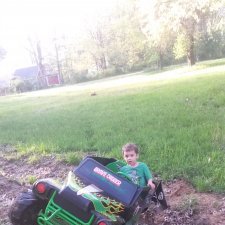Leaderboard
Popular Content
Showing content with the highest reputation since 05/25/2018 in Posts
-
Since I've seen some questions on this I took some pictures and will provide instructions on a valve adjustment for the UT400. This should be the same for the 550's and other various Coleman/Hisun single cylinder models with the cylinder slanted aft. I have seen several people ask of it is really necessary, and read several reports of valves being out of adjustment from the factory. My valves were .004" intake, and .010" exhaust with about 5 hrs on the machine. I've seen different numbers thrown around for factory spec, but I decided to go with 0.005". This is called valve lash. What is is is a gap between the rocker arm and the valve then the camshaft isnt opening the valve. Why does it matter? If it's too large the valve doesn't open all the way, if it's too small the valve dosent close. This can cause valve damage (overheating) as well as loss of engine power (burned fuel is going out exhaust rather than pushing the piston dow). Tools required : 5MM Allen wrench, 10MM box wrench, needle nose pliers, flat feeler gauge set, rags First you need to remove the fan cover on the passenger side. There is a cooling vent hose on the back side, remove the hose clamp and slide it off. From there there are 4x 10mm bolts holding the cover. The forward ones can be accessed from under the seat. Next remove the spark plug from the drivers side. Carefully wiggle the spark plug wire off. Grip it as low as possible and give it a little twisting motion as you pull it off to help free it. Its a tight fit for a socket, but there is a sheet metal wrench in the toolkit that fits it. Unscrew the plug and set it aside. This allows you to spin the motor over freely with no compression to fight. When you reassemble this is a good opportunity to switch to an NGK iridium plug for better performance/less fouling DR8EIX) Next you need to remove the intake and exhaust valve covers. The intake us the forward one. There are 3x 5MM Allen screws to remove. The Exhaust is the rear with 2x 5MM Allen bolts. Both covers have O-Rings instead of gaskets and are reusable. When you remove the rear be careful and use your rags as there will be oil that drips out. Next up we need to spin the motor over to top dead center. Grab each rocker arm and give em a little wiggle up and down. Spin the engine over by grabbing the fan with your other hand. Spin the engine over until both rockers have some wiggle and are loose. Once both rockers are loose slide the feeler gauge in like shown above. Try different feelers as needed to determine your starting spec. You should feel some drag but still be able to move the feeler without too much force. If you need to adjust, use the 10MM wrench to slightly loosen the locknut, then with the correct feeler gauge in place, tighten the top square nut while wiggling the feeler in and out. Once you have it right you need to tighten the 10mm lock nut without moving the square head bolt. Once the lock nut is tight recheck the clearance. That's it, button everything back up and make sure you have it all reassembled before running it again. If you find this helpful give me a thumbs up or comment. If you have any questions or need more help let me know. If there's interest maybe I'll do some more of these6 points
-
Hey Folks There are not a lot of good sources out there for troubleshooting and diagnosing ECU problems with the Massimo Buck, Bennche Bighorn, Bennche Cowboy, & Cazador machines that use the Delphi MT05 ECU. They are all basically the same with different badging, so I thought I'd share some info that I found during some searches. I was trying to help someone diagnose and repair a hard starting issue. The ignition coil was throwing a 0351 code. I discovered how to read codes without an OBDII code reader. The following procedures should help you check your fault codes and clear them if needed. Fault Code Troubleshooting for Delphi MT05 ECU on the Massimo Buck 400, Bennche Bighorn 400, Bennche Cowboy 400, and Cazador 400 *NOTE: The MT05 ECU is not really OBD 2 compliant. It is much more similar to an OBDI system. The MT05 ECU controls either 1 or 2 cylinder engines commonly found on Massimo, Bennche, and Cazador. Much of the ECU info was found here: https://netcult.ch/elmue/HUD ECU Hacker/Delphi MT05 Manual.pdf Delphi EFI System Design Delphi EFI employs 5 sensors to monitor engine performance. 1. Crankshaft Position Sensor 2. Coolant Temperature Sensor 3. Oxygen Sensor 4. Throttle Position Sensor 5. Manifold Air Pressure/Manifold Air Temperature (MAP/MAT) Sensor Delphi EFI employs the following system components. 1. MT05 Engine Control Unit (ECU) 2. Fuel Pump 3. Multec 3.5 Fuel Injector 4. Idle Speed Control Valve (Idle Stepper Motor) 5. Multec Ignition Coil 6. Fuel Vapor Canister Purge Valve Using the Digital Dashboard to Decipher EFI Trouble Codes In addition to commercially available diagnostic scan tools (Big $$$), you can use the engine warning light of the Siemens dashboard to diagnose most of your EFI problems. The digital dashboard receives signals from the MT05 ECU, and the engine warning light will flash a diagnostic trouble code (DTC) if the ignition key is switched on/off for three cycles. When you turn on the ignition, the engine warning light will illuminate, which indicates the EFI system is operational. After the engine is started, the engine warning light will extinguish if the EFI system is working properly. However, if the engine warning light remains illuminated, it indicates the EFI system is not working properly, and there is a system component failure. Deciphering Diagnostic Trouble Codes To read the diagnostic trouble code (DTC), open and close the ignition key three times in rapid succession, as follows: open/close—open/close—open. At this point the engine warning light will flash a DTC which indicates the fault in the EFI system. Refer to the attached fault code table to identify the corresponding problem. The engine warning light will emit a sequence of flashing lights. If the light flashes 10 times, the translated number is 0. If the light flashes one time, the translated number is 1, et cetera. For example, if the MAP/MAT sensor is disconnected, or the connector is shorted to ground, the engine warning light will flash in the following manner (This is an example only). The engine warning light will flash 10 times: The first number of the DTC is 0 After an interval of 1.2 seconds, the engine warning light will flash 1 time: The second number of the DTC is 1 After an interval of 1.2 seconds, the engine warning light will flash 10 times: The third number of the DTC is 0 After an interval of 1.2 seconds, the engine warning light will flash 7 times: The fourth number of the DTC is 7 The resulting DTC is P0107. NOTE: For the system I was helping to troubleshoot, I suspected an ignition coil failure due to the code that was thrown. When it was checked, it was flashing: 10, 3, 5, 1. The 10 represents a 0. So the actual code was 0351. After finding the code, the coil wire was checked and discovered loose at the spark plug. Once it was pushed fully on, the problem was fixed. Most likely, this problem was created after the owner had pulled the spark plug to check the gap. The ECU was rebooted using the procedures detailed below with no more codes being thrown. If there are other fault codes, the engine warning light will flash the next code in 3.2 seconds after finishing the first sequence. After all existing fault codes are flashed, the engine warning light will repeat the fault codes in a loop sequence, until the ignition key is turned off. To clear fault codes you either need an OBDII Fault Code reader and a Delphi 6 pin connector adapter cable that you have to order from China and wait 8 weeks…OR....you can simply reboot the ECU using the instructions detailed below. Rebooting the ECU Perform the following steps to reboot the ECU. 1. Turn off the ignition for 15 seconds. 2. Turn the ignition on/off for 5 cycles. Make sure each cycle lasts about ½ second, verifying the start of the fuel pump for each cycle. If the fuel pump doesn't start during any cycle, begin the entire reboot procedure from the beginning. 3. Turn off the ignition for 15 seconds. TPS (throttle position sensor) re-learn procedure after rebooting ECU. This should be done after replacing the TPS or the ECU....and it is advisable to check proper idle after rebooting an ECU too. Source: ECU Hacker (Reworded process slightly to make it a more sensible flow in my mind): 1. Turn the idle screw one full turn clockwise before starting 2. Start the engine, and run at low idle until the engine warms. Maybe a couple of mins. 3. Idle should be above 1500 rpm. If it isn’t, turn it up to 1700 then shut the engine off. Do another reboot of ECU. 4. Restart the engine and let it stabilize at 1700 rpm. Then turn the idle screen down to 1500 rpm and let it stabilize for a few seconds. Once it stabilizes, set to the final recommended idle speed for your machine. The placard under (or behind) your seat should show idle speed, valve adjustment, spark gap, etc. Typically the 390 cc engines in the "400" machines run at 1600 rpm idle. 5. Shut it down. Wait 10-15 seconds before restarting. The procedure is now complete. Final Notes: I have included pictures of an OBDII connector and the Delphi 6 pin connector in case anyone wants to go buy stuff off ebay or local parts suppliers and build a connector to use for an OBDII reader. But...you can save money and simply do the same thing with code reading and resetting using the check engine light on your dash. Some folks prefer to do it with code readers. Hope the information provided helps if anyone ever needs it but cannot find it in repair manuals. I discovered most of this in some motorcycle forums. The source for the diagrams is here: https://netcult.ch/elmue/HUD ECU Hacker/ Be advised: I am not a service technician. I do not endorse any manufacturers. I do not get paid to help, nor do I want to. This is just a hobby of mine. I enjoy working on things and solving problems. If you run into a weird problem that stumps you, give me a shout. I may be able to give you some ideas...or not. Just know, that troubleshooting thru emails can be challenging. The more info you can provide, the better. Otherwise, I will probably ask you a ton of questions. The good news is, the Delphi system used on these machines is essentially an OBDI and it is very simplistic. If you are methodical and patient, most of your "problems" can be figured out thru a process of elimination. Always go for the simple things first before throwing money and sensors at a machine. Take care - JT5 points
-
In order to connect with the ECU we need two cables. The first is a USB ODBII cable. HUD ECU Hacker’s documentation has a lot of different confusing options, but here’s what I went with and managed to get working, the cable is called “VAG KKL” it is a USB to ODB2 cable. It is available from a variety of sources for $10-15. The second thing we need is a “6 pin delphi to ODB2” adapter cable. It is also available for a similar price. In my case I ordered both from ebay, but there are other sources. Once we have our cable in hand we need to find the plug it in on your machine. My personal rig is a Coleman UT400, but the wire location should be similar for all Hisuns. My cable was located under the middle of the seat area. Just inboard of the battery, where the main wire harness split loom runs. The cable is a 6 pin (3x2) with a dust cap. Remove the dust cap and plug in the 6-pin end of the Delphi adapter cable. Note: When I was done, I left the 6-pin adapter connected, and zip tied it so it now runs to in front of the battery for easier access in the future. Next download and install HUD ECU HACKER DOWNLOAD Open HUD ECU Hacker on your PC It should prompt you to choose a driver to install. This particular cable uses the “CH340” driver (First choice on the menu) click to install, once installed hit the X in the corner to go back to the main page Once the driver is installed plug in the USB Cable, and plug the ODB2 end into the 6 pin adapter. The red led on the adapter should light up indicating it has power. Drop down and pick a com port on the main screen, it should show the VAG KKL adapter as a com port. Click connect on the main menu. It will pop up a bunch of fast scrolling text indicating it is connecting. Once connected you can click through the various tabs to see different data sets. The main menu also has the option to show fault codes, clear fault codes, reset the EPROM back to factory. The other function that may be helpful is recording a log file. You can record a log while operating the unit, and come back later and replay it to try to better diagnose what is happening. Within the various pages you will see the reading from each sensor. Sometimes a sensor reading will be off enough to cause running issues, but not enough for the ECU to realize its an issue. For example if the engine thinks it’s really warm, but its actually cold, it may not inject enough fuel to start. There are also more advanced functions, like adjusting fuel mapping, but that is beyond the scope of this tutorial. Full HUD ECU Hacker Documentation (Very technical reading) If you find this helpful give me a comment below or a thumbs up.5 points
-
White smoke is usually coolant leaking into the cylinder. Sounds like a blown head gasket to me.4 points
-
Just wanted to give update . It was the ecm. Put new one on and got spark immediately to front cylinder. Ran but smoking and no power. I checked back cylinder and no fire. Pulled coil to check with meter and found wire was not getting good connection where it plugs into coil. All good now . She will scream !!!. Next is to figure out why 4x4 switch wont turn. Thanks for all the imput....4 points
-
Hello to anyone who reads this. I am Jon and I own J&M Outdoor Power, a very small, small engine repair shop. I was approached by Coleman about 6 months ago to become one of their Warranty Centers. I recently received 3 different UT400's and a UT500 all with similar issues. These units range from 2 months to 2 years old. Customers state that the unit(s) was/were running fine, then heard a pop and a loss of power, two would no longer start. The two that would run would not achieve normal operating speed (around 20mph I would say) without redlining the RPMs. I quickly found that the Valve lash on each unit had become too large on some(both intake and exhaust) and too tight on one(just intake). After setting the gaps to .005(I found multiple different people suggesting bigger and smaller gaps, but no definitive Coleman Spec number yet) every unit starts, runs, and achieves top speed without issue. I don't know how many others have come across these issues, and I wanted to get something out on the web for others in the same predicament. Please let me know if you have had similar issues. Edit: I realize that this will not be a fix all solution for this issue, as the oil level and condition should be verified before moving to the valves. Many times improper oil conditions will cause valve lash to change. These units all have good oil and proper oil changes.3 points
-
Hello again! I now have a pretty good running Coleman UT400 after a top end rebuild, wet clutch rebuild and a repaired crankcase... ! It plows snow great, but I was also having the jumping out of gear problem, mainly reverse, but a couple times out of forward. I would quickly place it in N and then let the engine idle down and shift again. This worked most of the time. I did some research and found that some have modified the shift linkage. The problem with just adjusting the shift cable is that it really NEEDS more throw, not an adjustment. From what I've read and viewed on the Internet, the linkage arm needs to be about 3/4" longer to gain more throw in both directions. On YouTube, the guy had to remove the shift linkage hole trim and notch the side of the dash to get the shift linkage off the pivot pin. BUT this is NOT necessary. When the "E" clip has been removed and you fish it out of the firewall somewhere, the shift lever is now loose. I had to pop the top of the shift knob off, remove the retaining screw and then heat the lower portion of the knob to get it to come off the lever. Once you have the shift lever loose, push it towards the right to slide it off the pivot shaft. But it won't come off just yet. Use a small pry bar/screw driver and slide the nylon flanged bushing out of the left side of the lever. This lets the lever slide off and get into a "loose" condition and it will twist and come right off without removing the dash trim, that could be a bugger to get back on correctly. Once the lever is off, press out the other bushing so when you're welding on the linkage arm, you don't melt the bushing. I found a piece of scrap metal the same thickness as the lever arm, just over 1/8" thick, close to 3/16". I cut my arm and beveled the edges for better welding. I added a piece just over 5/8" long and kept about a 1/16" gap between the arm and the new piece. Once welded on bother ends, it adds up to just about 3/4" or so. I reinstalled the lever after painting it and did an adjustment on the cable. By the way, it's easier to remove the cable from the bracket on the frame. This gives you more clearance to maneuver in that area with your hands. ALSO, you will need to get a 12" adjustable wrench and slide it over the cable mounting bracket and tweak, to the front, the steel so the cable is pointed upward a bit to now realign with the new longer shift arm lever. There's more than enough metal for the tweak and it will line up perfectly. I now bottom out the shifter on the transmission BEFORE I run out of throw on the shifter... I've tested it just a bit so far and it shifts much better with the longer throw. One of the Coleman authorized repair facilities said that he worked with Coleman to get a new part that's longer by 3/4". He's modified a few and it works perfectly for him. Just doing the cable will just short you on the other end. Here's some pictures of my modified shift lever etc.3 points
-
I have come to the conclusion @Joe Toup must be one of the very best, most helpful members here!!! He has been tireless sharing his knowledge and expertise helping me solve a problem. I am sure I'm near a good solution thanks to Joe!!👍👍👍3 points
-
There are actually 5 disc brakes on these machines. 1 for each wheel and 1 on the rear driveshaft for the parking brake. I've read several complaints of the parking brake one being too tight from the factory so I would check the cable and make sure there's a little slack when the parking brake is released. If that is good I would jack up each corner Individually and spin the wheel to listen for noise and feel for dragging. That should help pinpoint where the issue is.3 points
-
anybody else getting spam /fraud private messages on here besides me? How do I report it? He calls himself Maria .under ORANGE 15 name.. wants to hook up in UTVs .. con artist in Pakistan probably.. Cant ADMIN block this crap ? geesh3 points
-
Just looked at the Lowes add for that, pretty much looks like an MSU 500/700 that Hisun made for Massimo back then. Take a good look at the badging on parts to see who it's actually made by, my guess is it's still Hisun.3 points
-
Its my 2nd day on this plat form. I'm new here in this community but in these two days I got some Premium recommendations. I was in search of these recommendations form the past few months. Thanks you so much for creating such kind of the community. Regards: Zeeshan Mehmood3 points
-
Hi, all, I am here to say i have found an excellent source for kawasaki parts, It's run by Eddie Babbit. It is called Kawasaki Partshouse. run by Babbits online, Muskegon Michigan. http://www.kawasakipartshouse.com/oemparts Just the other day i ordered piston rings, for my Mule 550, They got here and a Oil ring, and smaller ring were missing from the box, Kawasaki took responsibility for the "Accident" and I had also contacted babbits, and they replied and they said" keep the old rings, order a new set and you just pay shipping" so i got $30 piston rings for 8.95!!!? Free shipping on orders over $50!!!3 points
-
Put 15 miles on it today mostly on the beach in 4WD--the front diiferential is definitely smoother and quieter, and engaging/disengaging 4WD and front lock more positively with the ATF...3 points
-
3 points
-
3 points
-
3 points
-
3 points
-
3 points
-
3 points
-
3 points
-
My dealer just got parts this morning (purchased on Jan. 20th) - I should have it by the weekend!3 points
-
Looks like we are getting somewhere now. checked the Fuel (Gas) cap. No vent there - the tank is vented via a carbon filter to the air intake. Air flow is fine. Disconnected the fuel pump from the carby and stuck the end in a jar and ran the engine up (the carby holds a fair bit pf fuel and the engine will run for a while with no fuel supply. At idle and low RPM the flow seemed ok but as the RPM increased the flow decreased and eventually stopped. I wasnt able to get another pump here at a reasonable price so pinched the pump from my lawn mower which has a 450 - 500 cc motor so should be close enough to work and tried the test again. The first thing I noticed was the fuel flow was much higher at low RPM and at high RPM while the flow did decrease it still kept pumping. The second test only ran for about 20 secs and I collected substantially more fuel than I did in the first test which was about 40secs. So I have left my lawnmowers pump in the Mule and took it back out to the farm and took it for a good run up some hills loaded up a trailer and dragged that up through a boggy paddock and she didn't skip a beat. So it looks like the fuel pump was the culprit (after the gummed up choke was sorted). Interestingly though I put the Mules Fuel pump in my mower and cut the front yard at home and it seemed to work fine. Though the mower doesnt tend to run at as high an RPM as the mule and any heavy loads are generally short lived so the issue would not be so evident - Ive got a new pump on order at any rate. Thanks for all the input and suggestions - I hope the discussion helps someone else in the future.2 points
-
Thanks but think I found the critter , the cam pressure relief spring had broken had to remove the head again to make sure nothing got crushed , but found everything installed new spring put back together , but made sure that the timing marks were where they were supposed to be , adjusted valve springs and it started right up, ran for a few seconds and I believe some garbage got into the fuel system , but thats for tomorrow problem solving !! ROFL thank's for sharing2 points
-
2 points
-
I've had my T-boss 410 since 2020. No problems yet aside from some adjustment issues. I don't use it much, and the battery leaves something to be desired. It needs a replacement is all. Cue Joe Breaux.....😎2 points
-
Hydrogen combustion and Hydrogen Fuel Cells are the only "green" solutions that makes sense. Too bad finding fueling stations still isn't anywhere close to where we need to be.2 points
-
I'm having a similar issue with my Coleman UT400, but it started after we left it out in the rain over night (we usually keep it in the garage). We were expecting a large delivery, so needed the garage space for a couple days, and got an unexpected rain shower. When I went to bring it back inside, it turned over fine, but would not fire. I ordered/replaced the CDI, voltage regulator, and coil and still would not start. Cleaned the plug, and it fired right up ... this time. After a few short runs, it quit starting again. The plug was wet fouled with fuel. The same NGK DR8EA as mentioned above. I picked up a couple new ones, but now I have to rotate those in about every 3 starts ... either it won't start, or shortly after starting, it will stall and not refire. Also, when a new/clean plug (I clean them with alcohol and then sandblast them real quick) is put in, it will crank in a couple of seconds, but subsequent attempts will take running the starter motor for 10-15 seconds before it fires. Googling brought me to a page that said Hisuns were bad about bad/dirty injectors causing fouling (I have always run premium with stabilizer in it), so I ordered and replaced the injector too but experienced the exact same issue. Seems like the next thing to try would be the ECU, but that's a little pricey, so I'm hoping for other suggestions before I go there. Now, I did try a hotter plug (DR7EA) and it seems to not foul as quickly, but from the get-go it has taken a lot of cranking on the starter to get it to start up, but seems to run better once started.2 points
-
Have the head and block mating surfaces checked. Sure sounds like a warped head or maybe a crack between the cooland and oil passages. Common occurrance when overheted and run until it runs no more. If warped, might be able to have the head and/or block machined. A crack can also be repaired (maybe).2 points
-
I have had my E1 since late last summer and I have always noticed that the parking brake was weak or non existent. About a month or so after I purchased it I mentioned to the dealer that the parking brake did not function well. What I was expecting from the dealer, ' well bring it in and we will correct the issue.' What I got was the typical dealer response, "it may just need to be adjusted." No shit! Well I finally decided to adjust it. A very simple process need only two 10mm wrenches. Open the bed, remove the pin holding the bed to the strut and move the bad out of the way. Right in front of the electric motor is a brake disk. That is the parking brake. It has a small set of brake pads that are actuated by a lever attached to parking brake cable. There are two 10 mm nuts on the shaft to moves the pads. Release the inner nut and hold it in place while screwing in the outer nut - that is really a bolt. After screwing it in about one turn, tighten the other nut. Check the parking brake. If it is holding when activated, then you are good, but if not, then you may have to turn the bolt another turn. Do not turn to far or you will lock it up.2 points
-
Sounds like the machine thinks it's low on oil. Since it must still be under warranty, I'd let the dealership sort it out.2 points
-
you have air trapped in the head. try bleeding out air at head and at waterpump ....or .you have a bad head gasket .. Hisuns are not for riding, they are for working on2 points
-
None, nor electric cars. It is an industry in it's infancy that needs time to mature. Electricity is not an energy source it needs to be generated from energy sources--currently in the civilized world a modestly inefficient process to create AC current, we then carry it, with losses, over power lines to it's application where in the case of electric vehicles we convert it to DC--with losses-to charge batteries to convert that stored energy to motive force (with losses) Direct conversion of an energy source (gasoline) to motive force is modestly inefficient but still in the overall more efficient than all the conversion and transmission loses. In any valid "Well to Wheels" analysis, modern ICE's win every time...2 points
-
I have been meaning to write this up for some time. As delivered (in late October 2020) my 2020 UT400 had the expected number of loose "final assembly" nuts and bolts, but even after tightening down everything it still had an annoying metal-on-metal rattle--one f those that was quite audible but difficult to locate. it sounded like some chassis or suspension component but I could not pin it down. So, I took to carrying a large rubber mallet with me and stopping and banging on things when it really got to me. Eventually I tracked it down to the rear uprights for the roll cage moving about on their mounting posts. The left and right rear cage posts slip onto forged steel hubs welded to the frame and were cross-bolted with some very pretty 10 mm dia. binding post type fasteners having an 8 mm threaded internal shank (the Service Manual says they should be torqued to 48 lbf·ft but when I tried all I got was a violent and quite loud "pop" as the head ripped off the female end): Examine the torn apart section and it's obvious why it could not handle 48 lbf·ft. Here's how it mounts, from the service manual; So, I replaced both binding bolts (pretty but not up to the task) with a plain ol' 10 x 1.25 x 50 mm class 10.9 bolts and self-locking nuts; and had at torquing it again--no problems, the cage upright squeezed up tight on the forged post and the rattle was gone making me a "happy 'UTVer'"...2 points
-
$110 each from AlphaSports--a bit better... Amazon has a number of less expensive options if you feel creative...2 points
-
I searched for quite a while for a replacement rack and pinion.. I could not find one other than the ridiculously priced replacement from American Landmaster. I ended up rebuilding mine. It was not to bad to get apart. the housing , gear and steering gear bar were in good shape. the problem was finding spacers that would hold the steering gear bar straight and let it move side to side. I went to a local Hardware Supply that only sold nuts, bolts..etc. They had some spacers that fit perfectly. across the street from that place was a bearing place. They had oils seals that fit the open end perfectly. After I got the steering box greased and assembled I hammered in the oil seal at the end to hold it all together. I was worried the oils seal may come out with use, but months later and lots of riding it never moved. All the parts were around $25. The rebuild was cheap and easy once I secured the correct spacers and seal.. The spacers were loose bulk and the bearing place opened the bag on the seal to look at the fit. When I bought everything I did not get any part numbers or sizes. The part on mine that was really worn was the steering shaft. The end that connects to the steering box was completely rounded out. I ended up making my own steering shaft with two steering shaft ends and a piece of steering shaft. It was much higher quality and would never strip out. But, for the same money I could have just bought the overpriced new shaft from American Landmaster. It would have been much easier. As far as other parts.... Anything that is specific to the Bulldog can only be found through American Landmaster and some of those parts are no longer available. The Frame and Plastics: Fenders, roof, bed..etc are all oem parts. I bought those from Tractor Supply. They used to be an American Landmaster dealer until last year. They were much cheaper than American Landmaster and if I had them shipped to the store for pick up there was no shipping. You need to search Google for dealers selling these parts. Sometimes you will find old stock cheap. You can also use parts from different models that are actually the same part. American Landmaster will give the parts a different model number for the same part. Example: The rear fenders for a Bulldog are sold individually at a ridiculous price $60+ and high shipping cost. That is $120+ Shipping. Yet the rear fenders for the 265 model ( The cheaper version of the Bulldog ) are sold by the pair for $39.99 and can be found on Ebay sometimes with free shipping. They are exactly the same part. As for mechanical parts, most of them are Golf Cart and Go Kart parts. It takes some searching to find the correct parts. Most I found were E-Z-GO Golf Cart parts. If you have a specific part you are looking for and I bought the same one, I can look to see if I have the info. I bought the majority of mechanical parts on Ebay and Amazon.2 points
-
Actually you can, the real differences between GL-4 and GL-5 are nearly negligible. GL-5 is claimed to handle shock loading better than GL-4; and be slightly more "slippery" making the EPA happy.. If I had an axle with dirty oil that really needed to be changed, and had nothing but a bottle of GL-4 on the shelf, I use it and not lose a moment's sleep...2 points
-
most Golf cart batteries are designed to be capable of discharging up to 80% of their charge, while most deep cycle marine batteries are capable of discharging up to only %50 of their charge. this article may be more helpful, https://www.dixiebattery.com/products/golf-compare2 points
-
2 points
-
I am lookin for recommendations. I would like to put a winch on my 2019 Honda Pioneer 1000-5. I have been looking at the Warn Axon 55s but would entertain any feedback from people regarding this or other winches.2 points
-
2 points
-
Mind if I share? I have a 4 year old and a 5 year old girl. I'm doing it all solo. I'm a work from home EE with a huge French company, who came back to me this week with there is nothing they can do for me in the middle of this pandemic. With no school, no daycare and no options from my company, I had quit yesterday. My silver lining is I got this Mule FX already paid for -and last Christmas I bought 20 acres near the family farm. There is a class 1 trout stream (restocking not needed) running through the bottom of the land and another 10 acres tillable up top. 80% of the surrounding land belongs to childhood friends or family. Everything (except for the highway) out there is open to UTV's. I got a 20 minute straight shot of ATV route from home to there and an abandon RR track that leads straight to the small town I grew up in. I hope to have one hell of a great summer.2 points
-
2 points
-
The back plate of the hub brake drum will interfere also if its bent out of alignment. I had to adjust mine after some repairs with a mallet.2 points
-
I'm curious, how did you check the injector to verify it wasn't flowing? First thing I would do it stick an ohmmeter on it and look at the resistance across the injector. I would imagine somewhere between 5-50 ohms. Then I'd check voltage coming to it during start up to see the "pulses". If I've got voltage, but no squirt-squirt, bad injector. If the injector is pulsing but not squirting, its clogged. Either way, new injector.2 points
-
Stay as far away from Hisun as you can, fit and finish nice but I bought a truck load and every single machine failed in the first 5 miles and took months to get parts. 5 out of 5 generators failed as well and they would not offer any warranty support! They set up dealers just to get rid of inventory. Units that cannot be retailed to dealers goes to the auction house and drives the value down, Nada wont ever put a resale value for Hisun on their website. They do not support dealers, I finally got my last one to the auction house and the throttle cable broke on it way to the selling line! Its like throwing money away doing business with these folks... Run away and hide from Hisun as fast as you can! or just send me the cash!2 points
-
Sorry if this is not the place to post for sale. I could not find Joyner for sale forum. For those that do not know the Joyner, these are $12K new retail. I just purchased this one last year and only has 139.4 miles. 1000cc with 5 speed manual transmission. Can be street legal. Already has all equipment installed. 4x4 or 2wd. Winch, LED lights. These seem more popular in the Southwest for desert riding, but we had a great time riding with our family here in NC and WV on trails and our land. It is my understanding the engine is the same engine that is in the John Deere Gator. These have super large suspension and axles. I cannot think of any other unit you can buy at this price and have 4 seats and do what this one does. I also liked that I could teach my kids how to drive a manual. email me at [email protected]2 points
-
Update on the swap. Since getting the new engine spun up, and dialing in the Mikuni, we have been putting this buggy to use! After a good snow storm, it proved to be handy to have to go clear broken branches and fallen trees in the area. and on our property. I could tell right away though something wasn't quite right with the CVT, it would 'shift out' and the motor would just wind out (as in 5K+ RPM) too high in other words at an anemic 20 MPH tops. Once all the work was done I learned all about this CVT setup. Here is what I learned, and this should apply to all CVTech PWB50/80 type CVT setups for reference. I did the pen mark on the driver(primary) sheave to see what was up with the primary clutch pully, and it was only climbing out with an inch or more of the pen mark left. So I ordered a new Kevlar belt, turns out the original belt was worn about .032" or more, and the new belt being wider will climb higher up the sheave making it more efficient at least. While I was at it I decided to pull the driver pully off, and clean it up, document the spring, blocks, weight, and make sure everything worked - I suspected it was jamming up on the stationary sheave binding the sheave stroke. But I came to discover these clutches have a "Stroke limiter" ring, that stops the sheave stroke about .250" short of the full stroke. Since CVTech specs these CVT's with a shift ratio of 6.97:1 - (3:1 - .43:1 ratio range), with the limiter ring in there it limits the clutch to a 4:1 shift ratio = 3:1 - .75:1 or so depending on belt, spring, etc. So after reading the service information and some trial and error, mock fitting the belt to the sheaves and checking the belt position to full shift out, I removed the limiter to allow the full shift ratio of 7:1. To make a long story short - not only does it haul wood really well, now it hauls ass! lol The grippy belt with full sheave stroke is a night and day difference. The shift out is slow and mild, but the motor pulls down much better - no more crazy RPM to gain a cruising speed. So for anyone with a CVTech Powerbloc 50/80 (aka series 0400/0600), CVT and you need to gain about ~10MPH net speed increase, worn belt or not just remove that limiter ring. (The REAL benefit of this: will help give the belt more usable life with full sheave stroke, and mellow out the engine RPM) while cleaning the primary pulley assembly -- if you have one of the ASW/Landmaster, BullDog, Land Pride Trekker, etc. utility rigs (not sure what all this clutch setup comes on). I imagine it was up to the manufacture to install some type of limiter or not as the manual says (1 or 0) so it's not needed for proper clutch operation. I don't know why they cripple a fairly decent clutch like that, I imagine for some 'saaaafety' regulation, but it really makes the drive setup very inefficient. Once the weather gets a bit more decent we plan to shoot some video of it running. for the amusement of the five other people that own one of these Has come a long way since dragging it home! Anyway I hope someone finds this tip helpful, especially if you are going through a lot of belts. I attached a diagram showing the limiter and a couple pics of the process.2 points
-
I can certainly understand your point of view there. I also prefer trails over mud, but I've always just tried to embrace the maintenance that comes with a day of fun. For me, it was worth it. Since it's not my daily drive to work vehicle, it's okay if it's down till it gets a little service done.2 points
-
2 points
This leaderboard is set to New York/GMT-04:00




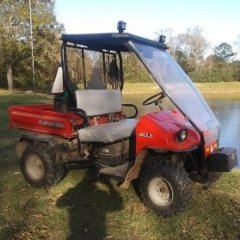
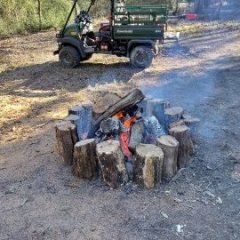
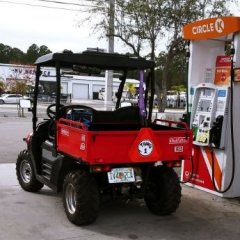




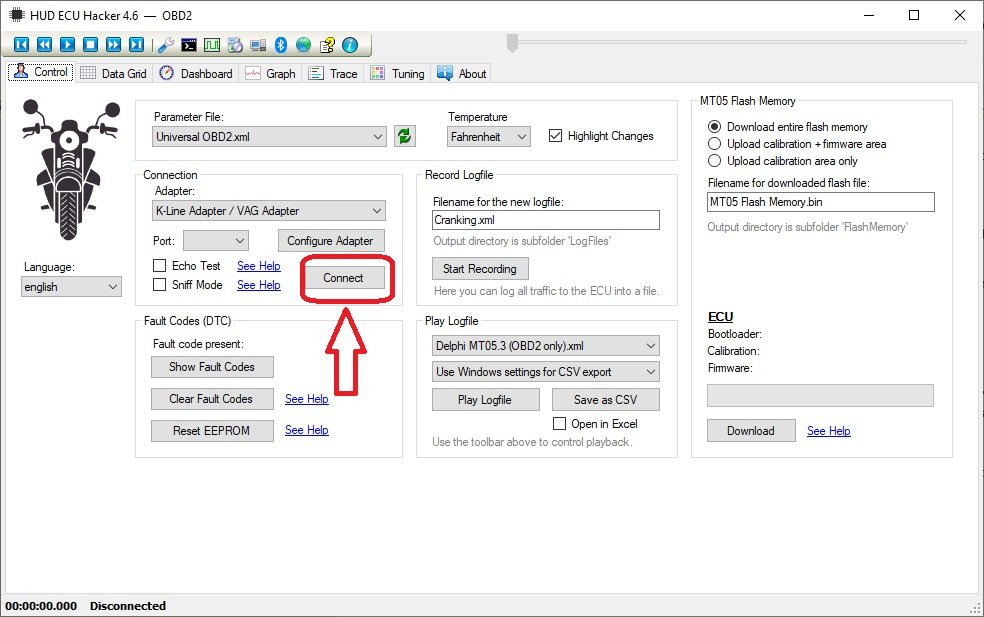






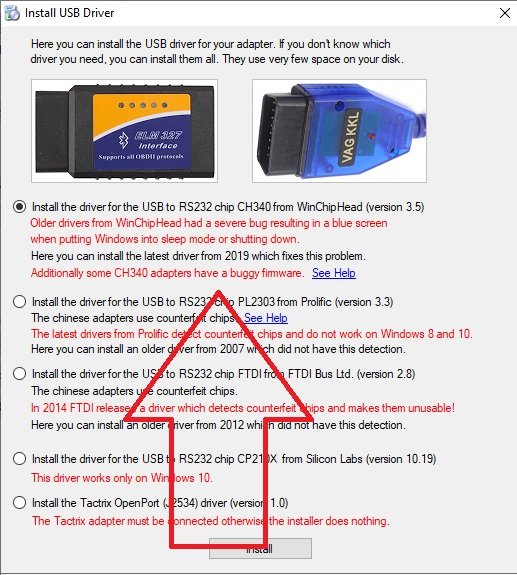




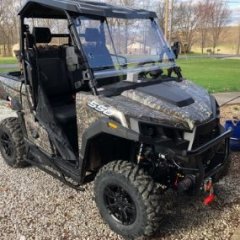

.thumb.jpeg.066fe53fd45b5795c37b2d989ac3a506.jpeg)



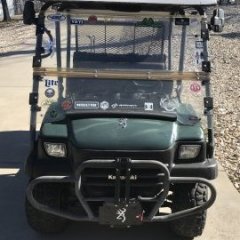






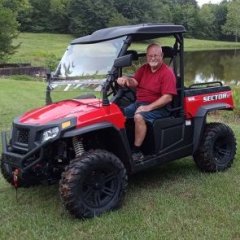


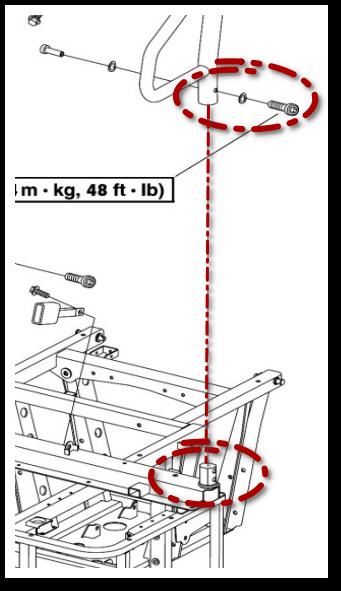


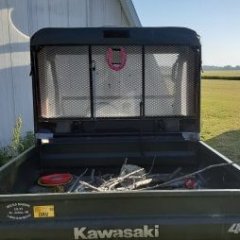
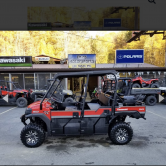


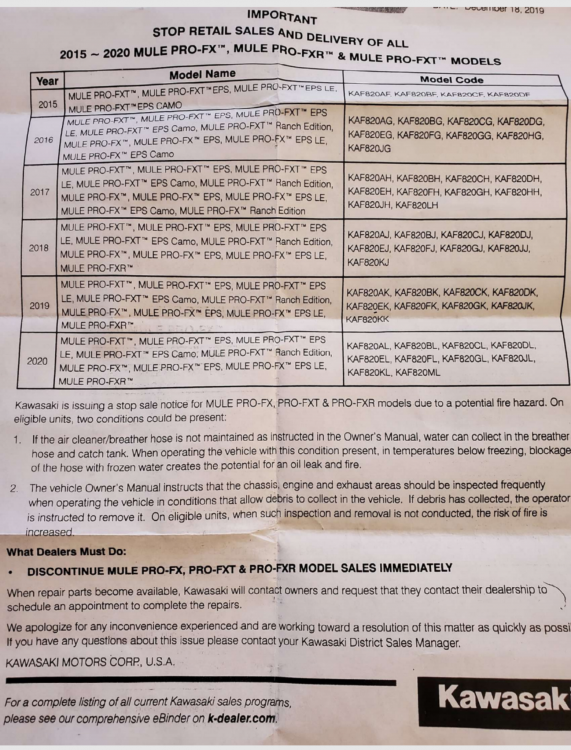
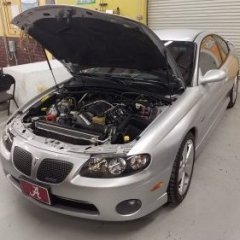
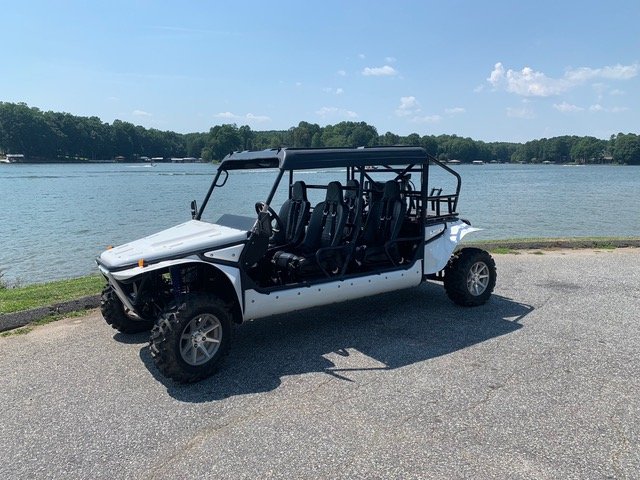
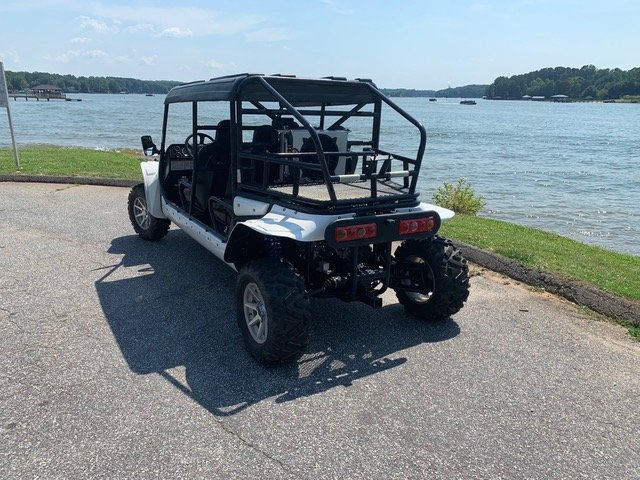
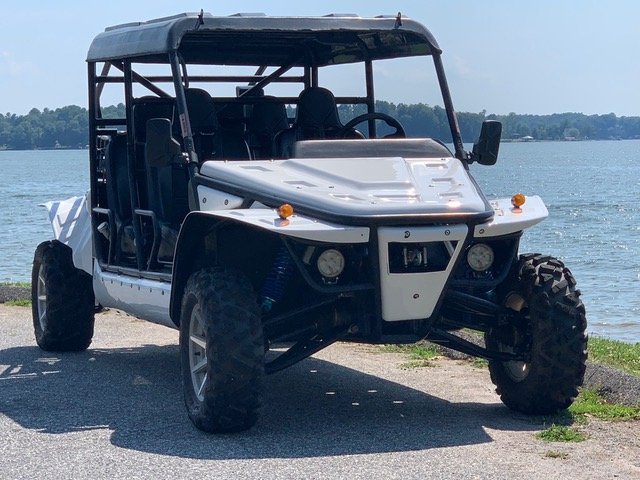
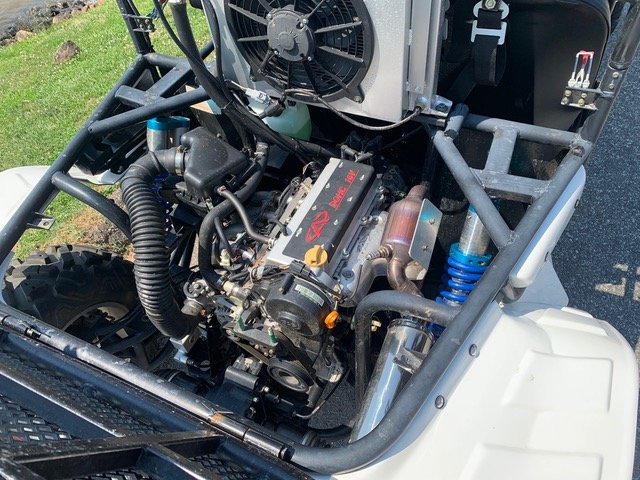
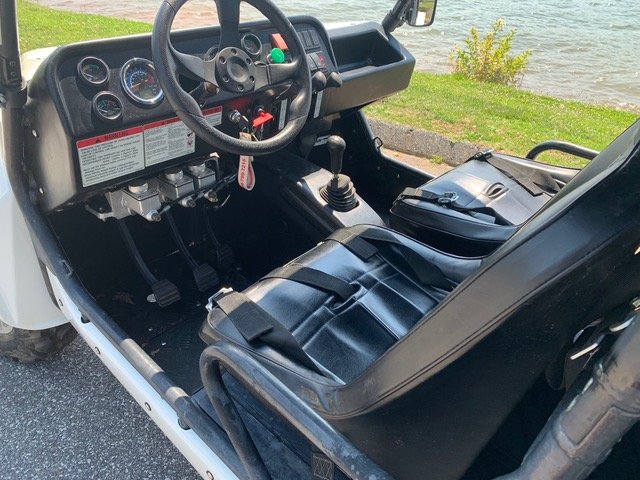
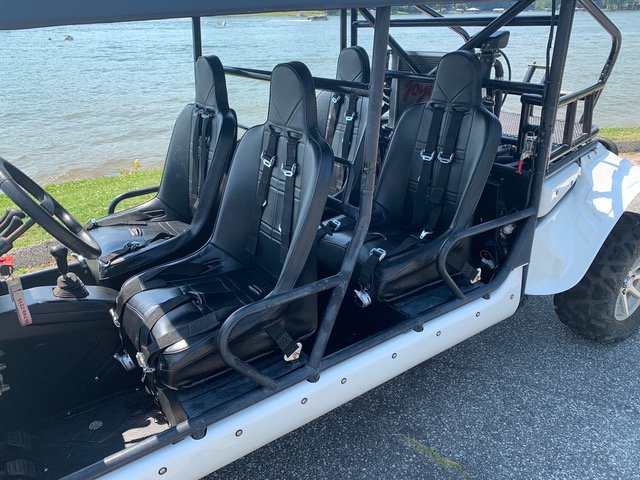
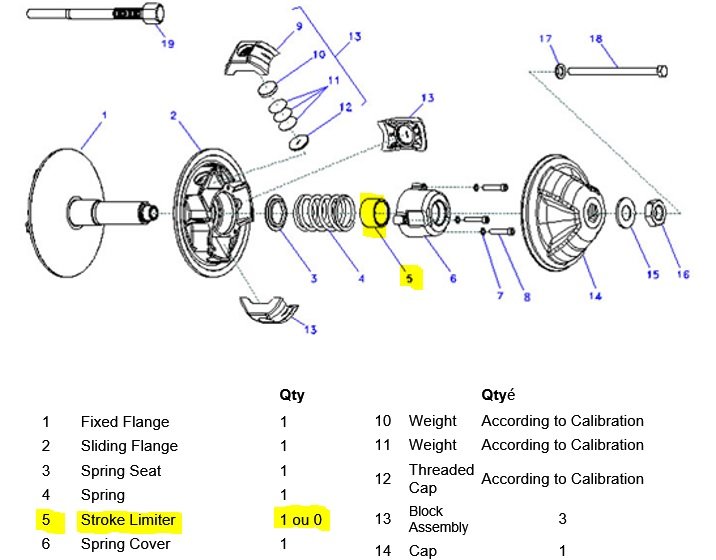
.thumb.jpg.ca84f7a371caa983366676aacc1ed985.jpg)

.thumb.jpg.40574d6d33a5bc2a0b08906113190219.jpg)


